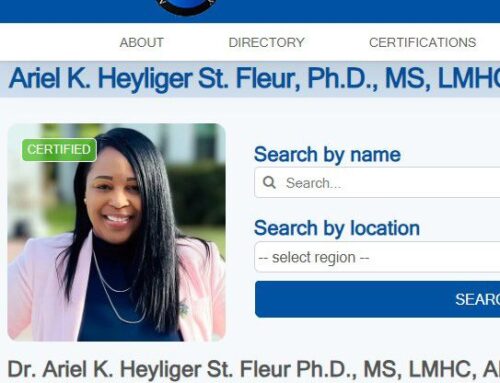
Pedophilia
Pedophilia is an ongoing sexual attraction to pre-pubertal children. It is a paraphilia, a condition in which a person’s sexual arousal and gratification depends on objects, activities, or even situations that are considered atypical. Pedophilia is defined as recurrent and intense sexually arousing fantasies, sexual urges, or behaviors involving sexual activity with a prepubescent child or children—generally age 13 years or younger—over a period of at least six months. Pedophiles are more often men and can be attracted to either or both sexes.
Pedophilic disorder can be diagnosed in people who are willing to disclose this paraphilia, as well as in people who deny any sexual attraction to children but demonstrate objective evidence of pedophilia. For the condition to be diagnosed, an individual must either act on their sexual urges or experience significant distress or interpersonal difficulty as a result of their urges or fantasies. Without these two criteria, a person may have pedophilic sexual desires but not pedophilic disorder.
The prevalence of pedophilic disorder is unknown, as the social stigma around it does not invite people to self-identify. Estimates of its prevalence range from one to five percent of the male population. There are believed to be only a small fraction of a percent of women, if any at all, who experience pedophilia.
Pedophilic sexual offenders are usually family, friends, or relatives of their victims. The types of pedophilic activities vary, and may include just looking at a child or undressing and touching a child. However, acts often involve oral sex or touching the genitals of the child or the offender.
Studies suggest that children who feel uncared for or lonely may be at higher risk for sexual abuse.
Symptoms:
According to the Diagnostic and Statistical Manual of Mental Disorders, Fifth Edition (DSM-5), in order for pedophilic disorder to be diagnosed, the following criteria must be met:
Recurrent, intense sexual fantasies, urges, or behaviors with a prepubescent child (generally age 13 or younger) for a period of at least 6 months.
These sexual urges have been acted on or have caused significant distress or impairment in social, occupational, or other important areas of functioning.
The person is at least 16 years old, and at least 5 years older than the child with whom the person engages in sexual behavior. This does not include an individual in late adolescence involved in an ongoing sexual relationship with a 12- or 13-year-old.
Additionally, a diagnosis of pedophilic disorder should specify whether the individual is exclusively attracted to children or not, the gender that the individual is attracted to, and whether the sexual urges are limited to children in the person’s own family.
There are a number of challenges to diagnosing pedophilia. People who have this condition rarely seek help voluntarily—counseling and treatment often come as the result of a court order.
Causes:
The causes of pedophilia are not well known.
Physiological models are investigating the potential relationship between hormones and behavior, particularly the role of aggression and male sexual hormones. Early research is underway exploring possible neurological causes.
There is some evidence that pedophilia may run in families, though it is unclear whether this stems from genetics or learned behavior.
A history of childhood sexual abuse is another potential factor in the development of pedophilia, although this has not been proven. Behavioral learning models suggest that a child who is the victim or observer of inappropriate sexual behaviors may become conditioned to imitate these same behaviors. These individuals, deprived of normal social and sexual contacts, may seek gratification through less socially acceptable means.
Pedophilia may be a lifelong condition, but pedophilic disorder includes elements that can change over time, including distress, psychosocial impairment, and an individual’s tendency to act on urges.
Treatment:
Treatment of pedophilic disorder can include behavioral therapies and medications. These treatments can reduce urges and the likelihood of acting on them, but pedophilic condition is most often a lifelong condition.
Cognitive therapies include restructuring cognitive distortions and empathy training. Restructuring cognitive distortions involves correcting a pedophile’s thoughts that the child wishes to be involved in the activity. Empathy training involves helping the offender take on the perspective of the victim and understand the harm they are inflicting. Positive conditioning approaches center on social skills training and alternative, more appropriate behaviors. Reconditioning, for example, involves giving the patient immediate feedback, which may help him change his behavior.
Research has disproven the perception that sex offenders are especially prone to recidivism. In reality, recidivism rates for sex offenses are lower than for all other major types of crime, and the U.S. Department of Justice has found that only about 3 percent of child molesters commit another sex crime within three years of being released from prison. Meta-analysis of hundreds of studies confirms that once they are detected, most convicted offenders never sexually re-offend. (Not all sex offenders who victimize children are pedophiles; only about 40 to 50 percent of convicted sex offenders who have sexually assaulted children meet the diagnostic criteria for the disorder.)
While treatment may help pedophiles resist acting on their attraction to children, many do not seek clinical help because of the risk of legal consequences due to mandatory reporting laws for licensed professionals, including therapists.
The prognosis for reducing pedophilic desire is difficult to determine, as longstanding sexual fantasies about children can be difficult to change. Practitioners can help to reduce the intensity of fantasies and help a patient develop coping strategies. Dynamic psychotherapy, behavioral techniques, and pharmaceutical approaches all offer help, but lifelong maintenance may be the most pragmatic and realistic approach.
Questions & Answers:
Is pedophilia a psychological disorder?
Yes. Pedophilic disorder has been classified as a psychiatric diagnosis under the DSM-5 since 1968. It is not a choice people consciously make.
Paraphilias, as a group, have a high rate of comorbidity with one another and an equally high rate of comorbidity with anxiety, major depression or mood disorders, and substance abuse disorders.
Is pedophilia more common among men or women?
Pedophillia is thought to be a male phenomenon. There is no reliable estimate of pedophilic disorder in females, though it appears to be rare. It is considered an open question whether the disorder exists among females at all.
One study found that, among victims of childhood sexual abuse, 6 to 24 percent of victims reported being abused by a female. Though that number is high and could be evidence of pedophilic disorder in females, many children who are sexually abused are not abused by people with pedophilic disorder, but by people engaging in individual instances of sexual abuse. As many as 50 to 60 percent of sex crimes against children fall under this category.
What is the age of onset for pedophilia?
The onset of pedophilia comes before adulthood, often during adolescence. In some studies, a minority of those surveyed said that they identified the feelings prior to puberty.
What is the prevalence of pedophilia?
Since there are likely many people with pedophilic disorder who hide their condition, the prevalence of pedophilia can only be estimated. Estimates range from 1 percent of the male population up to 5 percent.
How is pedophilia be diagnosed?
Pedophilia is most often diagnosed following a criminal investigation. Authorities use interviews, surveillance, or internet records in diagnosing the disorder. The use of child pornography is an important indicator of pedophilic disorder. Additionally, genital sexual arousal can be measured in a laboratory setting through sexual stimuli and is based on the relative change in penile response. This laboratory measurement is typically done after a person has been arrested for a pedophilia-related crime, though this measurement is used more widely outside the United States, as the United States has laws against child pornography that curtail what authorities are permitted to show.
Are people born with pedophilia or can it be a result of their environment?
This question remains an area of study. Pedophilic urges develop before or during adolescence, around the time one’s sexuality would emerge.
There is some evidence that people with pedophillic disorder have a higher rate of childhood trauma, including childhood sexual trauma, than average.
There is also some evidence that links people with pedophilic disorder with traumatic brain injuries in childhood. One study showed that those with pedophilic disorder sustained traumatic brain injuries as children at twice the average rate.
Some research indicates physical differences in the brains and hormones of those with pedophilic disorder, but more research is needed to corroborate and understand these initial findings.
Are there neurological differences between those with pedophilia and those without it?
The study of the brains of those with pedophilic disorder is an ongoing process with no conclusions. Evidence from some studies indicates that certain abnormalities in various sections of the brain correlate with pedophilic urges. These findings broadly focus on differences in the frontal and temporal lobes of the brain, which may contribute to a lower inhibition of sexual behavior or a dysfunction in the processing sexual urges. More study is required.
Is pedophilia genetic?
Pedophilic disorder seems to have a small heritable component. A Finnish study of nearly 4,000 male twins found that genetic influences explained only about 15 percent of variance from the general population when it comes to sexual interest, fantasies, or activity with prepubescent children. In contrast, psychiatric conditions as a whole have an average variance rate of 30 percent, with schizophrenia and bipolar disorder ranging as high as 70-80 percent. The evidence for heritability is not strong.
What should someone with pedophilic thoughts do to get help?
There are several therapeutic treatments that can be an option for those with pedophilic urges and can help modify one’s behavior and mental health while struggling with their situation. These include cognitive-behavioral therapy, empathy training, and reconditioning approaches. Many people with pedophilic urges do not seek psychiatric or psychological treatment due to the stigma around the condition in society and the mandatory reporting laws in the United States, which can lead to legal consequences if pedophilic acts are acknowledged.
Are there therapeutic treatments for pedophilia?
For people with pedophilic disorder who do seek help, research suggests that cognitive-behavioral treatment models may have some effect. Such models include aversive conditioning, confrontation of cognitive distortions, building victim empathy (such as by showing videos of consequences to victims), assertiveness training (social skills training, time management, structure), relapse prevention (identifying antecedents to the behavior [high-risk situations] and how to disrupt antecedents), surveillance systems (family associates who help monitor patient behavior), and lifelong maintenance.
The Prevention Project Dunkelfeld clinics in Germany, which use cognitive-behavioral methodology to teach clients how to control their sexual impulses, have treated more than 5,000 people who have voluntarily come forward seeking services. (Germany does not have mandatory reporting laws comparable to those in the United States.) The clinic also offers psychopharmaceutical interventions, including, when needed, testosterone-lowering medication to dampen sexual appetite. The project’s initial results, while based on small samples, appear encouraging: Participants have been shown to experience improvements in their self-regulation abilities and decreases in attitudes that support sexual contact with children.
Are there medical treatments for pedophilia?
Medications can be used in conjunction with therapy to treat pedophilic disorder. Such medications include medroxyprogesterone acetate (Provera) and leuprolide acetate (Lupron), and antiandrogens to lower sex drive. Intensity of sex drive is not consistently related to the behavior of pedophilia and high levels of circulating testosterone do not predispose a male to pedophilia. Hormones such as medroxyprogesterone acetate and cyproterone acetate decrease the level of circulating testosterone, potentially reducing sex drive and aggression. These hormones, typically used in tandem with behavioral and cognitive treatments, may reduce the frequency of erections, sexual fantasies, and initiation of sexual behaviors, including masturbation and intercourse. Antidepressants such as fluoxetine have also been found to decrease sex drive but have not effectively targeted sexual fantasies.
References
American Psychiatric Association. Diagnostic and Statistical Manual of Mental Disorders, Fifth Edition.
Levey, R. & Curfman, W.C. (2010). Sexual and Gender Identity Disorders.
Tenbergen, G., Wittfoth, M., Frieling, H., Ponseti, J., Walter, M., Walter, H., … & Kruger, T. H. (2015). The neurobiology and psychology of pedophilia: recent advances and challenges. Frontiers in human neuroscience, 9.
Bleyer, Jennifer. “Sympathy for the Deviant.” Psychology Today, November 2015.
Seto, M. C. (2012). Is Pedophilia a Sexual Orientation? Archives of Sexual Behavior, 41(1), 231–236. https://doi.org/10.1007/s10508-011-9882-6
Jordan, K., Wild, T. S. N., Fromberger, P., Müller, I., & Müller, J. L. (2020). Are There Any Biomarkers for Pedophilia and Sexual Child Abuse? A Review. Frontiers in Psychiatry, 10. https://doi.org/10.3389/fpsyt.2019.00940
Dr. Michael Ra Bouchard, Ph.D. makes a statement on LinkedIn
An Old-School Sexologist Speaks Out—
Pedophilia is NOT a Sexual Orientation
By Dr. Michael Ra Bouchard, Double Board-Certified Clinical Sexologist
Dear Friends & Colleagues,
A deeply disturbing matter has lately come to my attention which I feel compelled to now address in no uncertain terms:
Despite a flurry of recent public claims by so-called “scholars” declaring pedophilia to be a “harmless, natural sexual orientation,” pedophilia is NEITHER “harmless” NOR “natural” NOR is it in any shape or form a sexual orientation.
Anyone claiming that pedophilia is a sexual orientation is a damn liar!
Make no mistake: Pedophilia is a psychiatric disorder. And under the law, it is a crime—as well it should be.
These morally bankrupt, demonic shills brazenly attempting to “normalize pedophilia” would have you believe that pedophiles are “innocent victims” being morally and legally persecuted for their “natural” and “harmless” sexual feelings—when nothing could be further from the truth.
No one has the right to destroy a child’s life for their own despicable sexual gratification.
Unquestionably, children do NOT possess the cognitive capacity to give sexual consent—and sex without consent is always rape!
Pedophiles must rightly be held morally and legally accountable for their actions to protect innocent children from child predators who would use and abuse them for their own perverse sexual gratification.
Anyone having a problem with this approach needs to do some serious soul searching, and in conjunction, see a qualified mental health counselor to straighten their crooked thinking. Leave the children alone!
For the record, kindly allow this old-school sexologist to spell it out:
Sexual attraction to children—which by any other name is pedophilia—is a morally reprehensible mind and soul sickness that is simply wrong on EVERY conceivable level.
And anyone who engages in pedophilia is a criminal. No exceptions. End of story.
If you agree, feel free to repost this post wherever you see fit.
Please join me in protecting our children by speaking out against this wicked evil,





